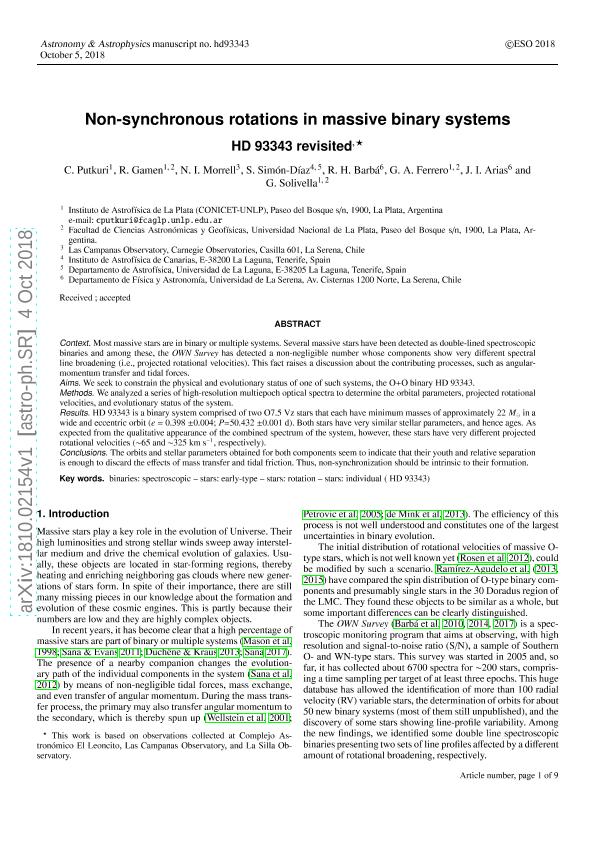Artículo
Non-synchronous rotations in massive binary systems: HD 93343 revisited
Putkuri, Cristina Ester ; Gamen, Roberto Claudio
; Gamen, Roberto Claudio ; Morrell, Nidia Irene
; Morrell, Nidia Irene ; Simón Díaz, S.; Barba, Rodolfo Hector
; Simón Díaz, S.; Barba, Rodolfo Hector ; Ferrero, G. A.; Arias, Julia Ines
; Ferrero, G. A.; Arias, Julia Ines ; Solivella, Gladys Rebeca
; Solivella, Gladys Rebeca
 ; Gamen, Roberto Claudio
; Gamen, Roberto Claudio ; Morrell, Nidia Irene
; Morrell, Nidia Irene ; Simón Díaz, S.; Barba, Rodolfo Hector
; Simón Díaz, S.; Barba, Rodolfo Hector ; Ferrero, G. A.; Arias, Julia Ines
; Ferrero, G. A.; Arias, Julia Ines ; Solivella, Gladys Rebeca
; Solivella, Gladys Rebeca
Fecha de publicación:
10/2018
Editorial:
EDP Sciences
Revista:
Astronomy and Astrophysics
ISSN:
0004-6361
Idioma:
Inglés
Tipo de recurso:
Artículo publicado
Clasificación temática:
Resumen
Context. Most massive stars are in binary or multiple systems. Several massive stars have been detected as double-lined spectroscopic binaries and among these, the OWN Survey has detected a non-negligible number whose components show very different spectral line broadening (i.e., projected rotational velocities). This fact raises a discussion about the contributing processes, such as angular-momentum transfer and tidal forces. Aims. We seek to constrain the physical and evolutionary status of one of such systems, the O+O binary HD 93343. Methods. We analyzed a series of high-resolution multiepoch optical spectra to determine the orbital parameters, projected rotational velocities, and evolutionary status of the system. Results. HD 93343 is a binary system comprised of two O7.5 Vz stars that each have minimum masses of approximately 22 M in a wide and eccentric orbit (e = 0.398±0.004; P = 50.432±0.001 d). Both stars have very similar stellar parameters, and hence ages. As expected from the qualitative appearance of the combined spectrum of the system, however, these stars have very different projected rotational velocities (65 and 325 km s-1, respectively). Conclusions. The orbits and stellar parameters obtained for both components seem to indicate that their youth and relative separation is enough to discard the effects of mass transfer and tidal friction. Thus, non-synchronization should be intrinsic to their formation.
Archivos asociados
Licencia
Identificadores
Colecciones
Articulos(IALP)
Articulos de INST.DE ASTROFISICA LA PLATA
Articulos de INST.DE ASTROFISICA LA PLATA
Citación
Putkuri, Cristina Ester; Gamen, Roberto Claudio; Morrell, Nidia Irene; Simón Díaz, S.; Barba, Rodolfo Hector; et al.; Non-synchronous rotations in massive binary systems: HD 93343 revisited; EDP Sciences; Astronomy and Astrophysics; 618; 10-2018; 174-183
Compartir
Altmétricas



